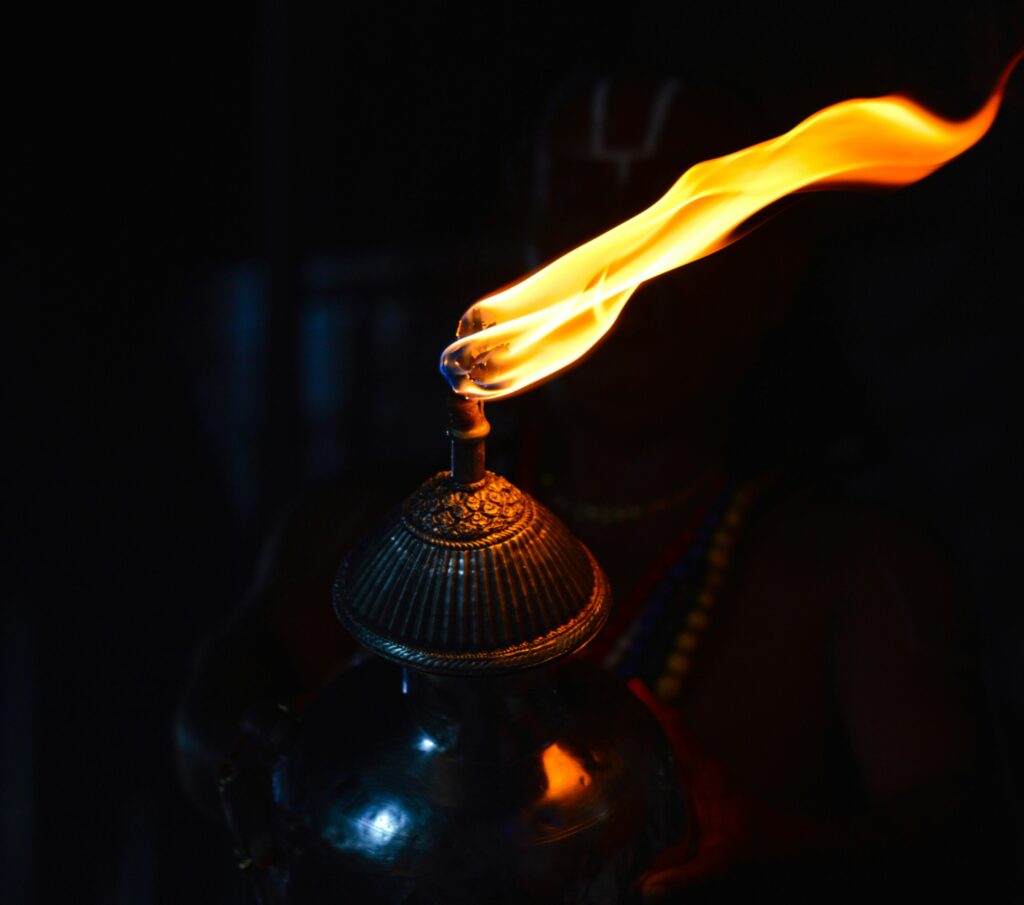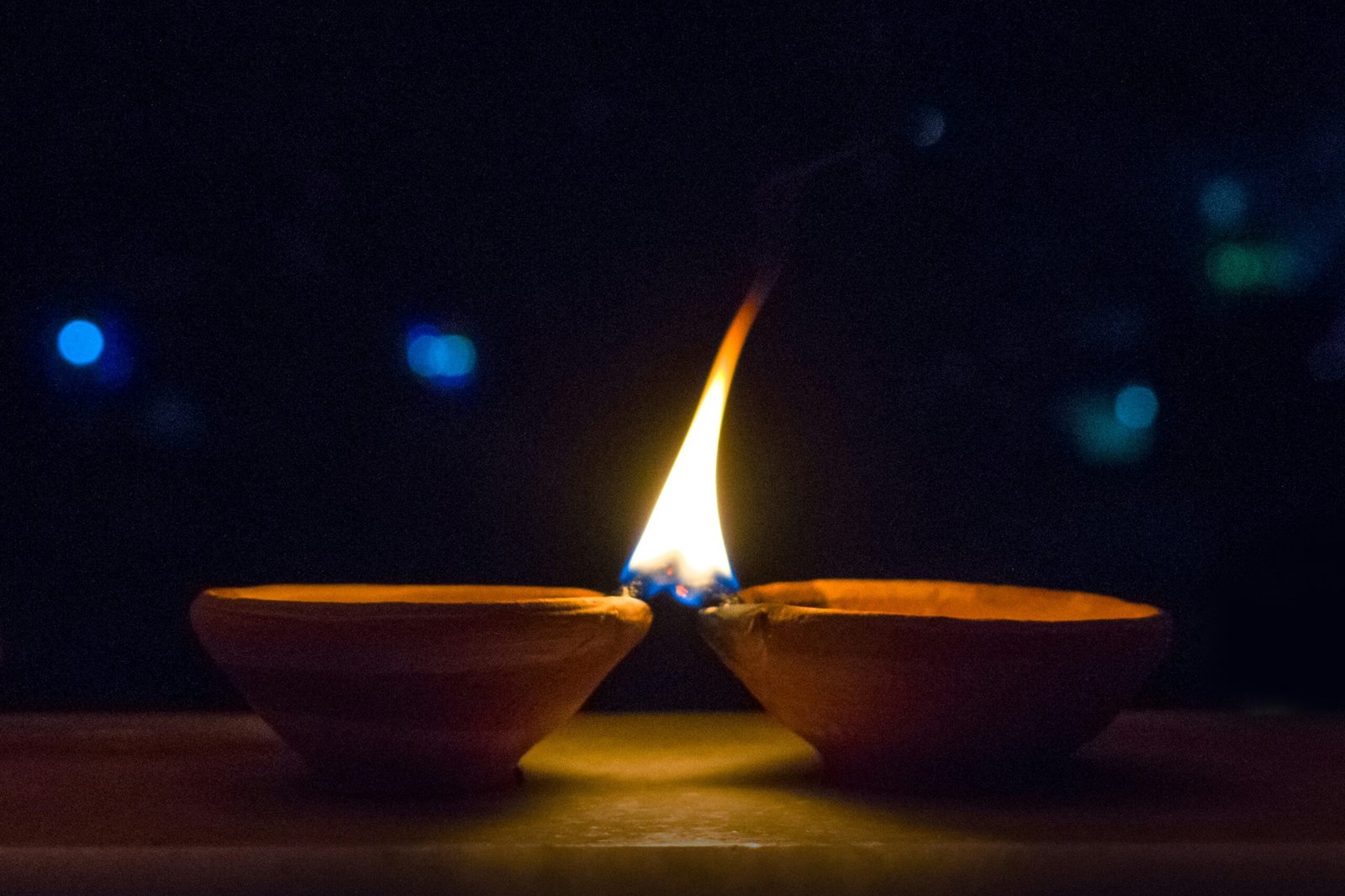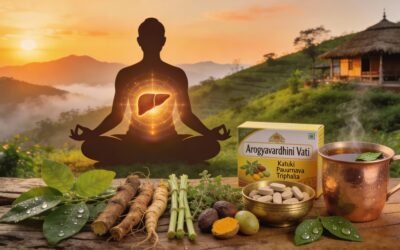This article presents a holistic approach to optimising human energy (prana) through the ancient science of Ayurveda, integrating traditional Indian nutritional wisdom, spice therapy, yoga practices, pranayama techniques, and mindful living principles to achieve energy alchemy. By aligning with Ayurvedic constitutional types (doshas) and seasonal cycles, individuals can transform their energetic state, eliminate negative patterns (ama), and cultivate sustained vitality and well-being through time-tested Indian practices.
Introduction

In Ayurveda, the 5,000-year-old Indian system of medicine, energy is understood as prana – the vital life force that animates all living beings. Unlike Western concepts of energy as mere calories or stimulation, prana encompasses physical vitality, mental clarity, emotional balance, and spiritual connection. This comprehensive guide explores Ayurvedic methods to enhance prana through the alchemy of Indian foods, spices, movement practices, and consciousness techniques to achieve energy alchemy.
The concept of energy transformation in Ayurveda involves balancing the three doshas (Vata, Pitta, Kapha), enhancing ojas (vital essence), and eliminating ama (toxins). By integrating traditional Indian dietary practices, therapeutic spices, yoga asanas, pranayama, and meditation, we can create profound shifts in our energetic experience while honouring ancient wisdom.
Chapter 1: Ayurvedic Nutrition and Energy Enhancement
1.1 Understanding Your Dosha and Energy Needs
Vata Dosha (Air + Space):
- Characteristics: Light, dry, mobile, cold
- Energy Pattern: Erratic, creative bursts followed by depletion
- Nutritional Needs: Warm, moist, grounding foods; regular meal times
Pitta Dosha (Fire + Water):
- Characteristics: Hot, sharp, intense, liquid
- Energy Pattern: Strong, focused, can become excessive and burn out
- Nutritional Needs: Cooling, sweet, and bitter tastes; avoid excessive heat
Kapha Dosha (Earth + Water):
- Characteristics: Heavy, slow, steady, cool
- Energy Pattern: Stable but can become sluggish and stagnant
- Nutritional Needs: Light, warm, spicy foods; stimulating tastes
1.2 Energizing Indian Foods by Dosha
For Vata (Grounding Energy):
- Grains: Basmati rice, wheat, oats cooked with ghee
- Proteins: Mung dal, masoor dal, warm milk with spices
- Vegetables: Sweet potatoes, carrots, beets, cooked leafy greens
- Fruits: Dates, figs, bananas, mangoes, soaked almonds
- Preparation: Well-cooked, warm, with adequate oil/ghee
For Pitta (Cooling Energy):
- Grains: Basmati rice, wheat, barley, quinoa
- Proteins: Mung dal, chana dal, fresh paneer, coconut
- Vegetables: Cucumbers, bitter gourd, bottle gourd, leafy greens
- Fruits: Pomegranates, pears, melons, coconut water
- Preparation: Moderate cooking, cooling spices, avoid excessive heat
For Kapha (Stimulating Energy):
- Grains: Barley, quinoa, millet, buckwheat
- Proteins: Masoor dal, toor dal, small amounts of lean meat
- Vegetables: Bitter gourd, cabbage, broccoli, radish, spinach
- Fruits: Apples, pears, berries, pomegranates
- Preparation: Light cooking, stimulating spices, minimal oil
1.3 Therapeutic Indian Spices for Energy Enhancement
Universal Energy Enhancers:
- Ginger (Adrak): Enhances digestive fire (agni), improves circulation, morning energy booster
- Turmeric (Haldi): Anti-inflammatory, liver detoxifier, golden milk for sustained energy
- Black Pepper (Kali Mirch): Enhances nutrient absorption, stimulates metabolism
- Cumin (Jeera): Aids digestion, balances all three doshas
- Coriander (Dhania): Cooling, digestive, balances pitta
Vata-Specific Spices:
- Hing (Asafoetida): Reduces gas and bloating, calms nervous energy
- Ajwain (Carom Seeds): Digestive stimulant, reduces anxiety
- Fennel (Saunf): Sweet, grounding, improves digestion
Pitta-Specific Spices:
- Cardamom (Elaichi): Cooling, aromatic, enhances mood
- Rose petals: Cooling, heart-opening, emotional balance
- Mint (Pudina): Cooling digestive, refreshing energy
Kapha-Specific Spices:
- Cinnamon (Dalchini): Warming, metabolism booster, blood sugar balance
- Cloves (Laung): Stimulating, respiratory support
- Mustard Seeds (Sarson): Heating, circulation enhancer
1.4 Ayurvedic Energy-Boosting Preparations
Golden Milk (Haldi Doodh) – Universal Energy Tonic:
- 1 cup warm milk (dairy or plant-based)
- 1/2 tsp turmeric
- Pinch of black pepper
- 1/4 tsp ginger powder
- Honey to taste
- Consume before bed for ojas building
Digestive Tea (Agni Tea):
- Equal parts cumin, coriander, and fennel seeds
- Boil 1 tsp mixture in 2 cups water for 5 minutes
- Sip throughout day to enhance digestion and energy
Chyawanprash: Traditional energy rasayana containing 40+ herbs
- Take 1 tsp morning and evening with warm milk
- Builds ojas, enhances immunity, provides sustained energy
Triphala: Three-fruit combination for detox and energy
- 1/2 tsp powder in warm water before bed
- Gently cleanses, improves digestion, enhances energy absorption
1.5 Seasonal Eating for Energy Balance
Spring (Kapha Season):
- Light, warming foods
- Bitter and pungent tastes
- Reduce heavy, oily foods
- Emphasize leafy greens and lighter grains
Summer (Pitta Season):
- Cool, sweet foods
- Fresh fruits and vegetables
- Coconut water, lassi, cucumber
- Avoid excessive heating spices
Monsoon (Vata Transition):
- Warm, well-cooked foods
- Ginger, garlic, turmeric
- Avoid raw foods and cold drinks
- Support digestion with spices
Winter (Vata Season):
- Warm, nourishing foods
- Healthy fats and proteins
- Root vegetables and warming spices
- Regular meal times
Chapter 2: Yoga and Indian Movement Practices for Energy
2.1 Classical Yoga Asanas for Energy Enhancement
Surya Namaskara (Sun Salutation) – Complete Energy Activation: Traditional 12-pose sequence performed 5-12 rounds each morning:
- Pranamasana (Prayer Pose)
- Hastauttanasana (Upward Salute)
- Uttanasana (Standing Forward Bend)
- Ashwa Sanchalanasana (Low Lunge)
- Dandasana (Plank Pose)
- Ashtanga Namaskara (Eight-Limbed Pose)
- Bhujangasana (Cobra Pose)
- Adho Mukha Svanasana (Downward Dog)
- Ashwa Sanchalanasana (Low Lunge)
- Uttanasana (Standing Forward Bend)
- Hastauttanasana (Upward Salute)
- Pranamasana (Prayer Pose)
Backbends for Heart Opening and Energy:
- Bhujangasana (Cobra): Opens chest, stimulates adrenals
- Urdhva Mukha Svanasana (Upward Dog): Heart opening, energizing
- Camel Pose (Ustrasana): Deep heart opening, courage building
Inversions for Energy Circulation:
- Sirsasana (Headstand): King of poses, energizes entire system
- Sarvangasana (Shoulderstand): Queen of poses, balances thyroid
- Viparita Karani (Legs Up Wall): Gentle inversion, restorative
2.2 Dosha-Specific Yoga Practices
Vata-Balancing Yoga:
- Slow, steady movements
- Longer holds in poses
- Grounding poses like child’s pose, seated forward bends
- Avoid excessive jumping or fast transitions
- Focus on hip and lower back opening
Pitta-Balancing Yoga:
- Moderate intensity practice
- Cooling poses like forward bends, twists
- Avoid excessive heat-building sequences
- Moon salutations instead of multiple sun salutations
- Practice during cooler times of day
Kapha-Balancing Yoga:
- Dynamic, energizing practice
- Fast-paced vinyasa or Ashtanga styles
- Heating poses like backbends, arm balances
- Morning practice to stimulate energy
- Challenging poses to break through inertia
2.3 Traditional Indian Dance for Energy
Classical Indian Dance Forms:
- Bharatanatyam: Precise movements, builds stamina and focus
- Kathak: Spins and rhythmic footwork for energy circulation
- Bollywood Dance: Joyful expression, cardiovascular benefits
- Folk Dances: Bhangra, Garba for community energy and celebration
2.4 Martial Arts and Energy Practices
Kalaripayattu: Ancient Kerala martial art
- Full-body conditioning
- Flexibility and strength development
- Mental focus and energy discipline
Mallakhamb: Traditional pole yoga
- Strength and flexibility combination
- Enhances body awareness and energy flow
Chapter 3: Pranayama – The Science of Breath and Prana
3.1 Foundational Pranayama Practices
Ujjayi Pranayama (Victorious Breath):
- Technique: Breathe through nose with slight constriction in throat
- Sound: Gentle ocean-like sound
- Benefits: Calms mind, builds internal heat, enhances concentration
- Practice: 10-20 minutes daily, during yoga or meditation
Bhramari Pranayama (Humming Bee Breath):
- Technique: Block ears with thumbs, other fingers over closed eyes, hum on exhale
- Benefits: Calms nervous system, enhances mental clarity
- Practice: 5-10 rounds, excellent for stress relief
Bhastrika Pranayama (Bellows Breath):
- Technique: Forceful inhale and exhale through nose, 10 breaths followed by retention
- Benefits: Increases energy, improves circulation, builds internal fire
- Caution: Avoid if pregnant or with heart conditions
- Practice: 3 rounds of 10 breaths
3.2 Energizing Pranayama Techniques
Kapalabhati (Skull Shining Breath):
- Technique: Forceful exhales through nose, passive inhales
- Benefits: Energizes, cleanses respiratory system, improves focus
- Practice: 3 rounds of 30-50 breaths
- Best Time: Morning, empty stomach
Surya Bhedana (Right Nostril Breathing):
- Technique: Block left nostril, inhale through right, exhale through both
- Benefits: Increases solar energy, improves digestion, heating
- Practice: 10-20 rounds, morning or when energy is low
Agni Sara (Fire Essence):
- Technique: Exhale completely, pull abdomen in and out rapidly
- Benefits: Stimulates digestive fire, builds core energy
- Practice: 3 rounds of 10-20 pumps
3.3 Balancing and Calming Pranayama
Nadi Shodhana (Alternate Nostril Breathing):
- Technique: Alternate breathing through left and right nostrils
- Benefits: Balances nervous system, harmonizes brain hemispheres
- Practice: 5-10 minutes, anytime for balance
Sheetali (Cooling Breath):
- Technique: Inhale through curled tongue, exhale through nose
- Benefits: Cooling, reduces excess heat, calms pitta
- Practice: Summer months or when overheated
Sheetkari (Hissing Breath):
- Technique: Inhale through slightly parted lips making hissing sound
- Benefits: Alternative to Sheetali for cooling
- Practice: Hot weather or excess pitta conditions
3.4 Advanced Pranayama Practices
Moorchha Pranayama (Fainting Breath):
- Technique: Inhale, retain breath while gazing between eyebrows, slow exhale
- Benefits: Deep meditative states, expanded awareness
- Practice: Advanced practitioners only, with guidance
Plavini Pranayama (Floating Breath):
- Technique: Swallow air to fill stomach, creates lightness
- Benefits: Unique energetic experience, advanced practice
- Practice: Under qualified instruction only
Chapter 4: Ayurvedic Approaches to Removing Negative Energy (Ama)
4.1 Understanding Ama in Ayurveda
Ama (Toxins) Definition:
- Undigested food matter that creates blockages
- Mental and emotional toxins from negative experiences
- Environmental toxins and poor lifestyle choices
- Manifests as low energy, brain fog, depression, physical illness
Signs of Ama Accumulation:
- Thick coating on tongue, especially upon waking
- Low digestive fire (weak appetite)
- Fatigue despite adequate sleep
- Mental cloudiness and emotional heaviness
- Joint stiffness and body aches
4.2 Panchakarma-Inspired Home Detox Practices
Daily Detox Routine (Dinacharya):
- Oil Pulling (Gandusha): Swish sesame or coconut oil for 10-20 minutes upon waking
- Tongue Scraping: Use copper tongue scraper to remove overnight toxins
- Warm Water: Drink room temperature or warm water throughout day
- Regular Meal Times: Eat largest meal at midday when agni is strongest
Weekly Detox Practices:
- Khichadi Cleanse: Eat only mung dal khichadi with ghee and spices for 1-3 days
- Abhyanga (Oil Massage): Full body massage with warm sesame oil before bath
- Steam Bath: Sit in steam room or take hot shower after oil massage
- Meditation and Pranayama: Extended practice for mental-emotional cleansing
4.3 Emotional and Mental Detox (Satvavajaya Chikitsa)
Ayurvedic Psychology Approaches:
- Satsang: Spend time with spiritually uplifting people and teachings
- Mantra Chanting: Repetition of sacred sounds for mental purification
- Om Namah Shivaya (universal mantra)
- Om Gam Ganapataye Namaha (obstacle removal)
- So Hum (I am that)
- Meditation: Daily practice of dharana (concentration) and dhyana (meditation)
Emotional Release Practices:
- Primal Sound Meditation: Using seed sounds (bija mantras) for chakra clearing
- Yoga Nidra: Deep relaxation practice for subconscious cleansing
- Trataka: Candle gazing meditation for mental focus and purification
4.4 Environmental and Lifestyle Purification
Creating Sacred Space:
- Puja Area: Dedicated space for spiritual practice with images, incense, flowers
- Natural Elements: Fresh flowers, plants, natural lighting
- Incense and Essential Oils: Sandalwood, jasmine, rose for positive vibrations
- Cleanliness: Regular cleaning with natural products, decluttering
Digital and Information Detox:
- News Fasting: Limit exposure to negative news media
- Social Media Boundaries: Curated consumption, regular breaks
- Sacred Reading: Replace mindless scrolling with spiritual texts (Vedas, Upanishads, Bhagavad Gita)
Chapter 5: Cultivating Positive Energy Through Indian Wisdom Traditions
5.1 Vedantic Practices for Energy Enhancement
Self-Inquiry (Atma Vichara):
- Daily contemplation: “Who am I beyond body and mind?”
- Witnessing consciousness practice
- Identification with pure awareness rather than fluctuating states
Bhakti Yoga (Path of Devotion):
- Kirtan: Group chanting of devotional songs
- Bhajans: Individual devotional singing
- Puja: Ritual worship with offerings of flowers, incense, food
- Japa: Repetitive prayer using mala beads (108 repetitions)
Karma Yoga (Path of Service):
- Seva: Selfless service to others without expectation
- Dharmic Action: Acting according to righteous principles
- Offering Results: Dedicating fruits of action to divine
5.2 Chakra Balancing for Energy Optimization
Muladhara (Root Chakra) – Grounding Energy:
- Mantra: LAM
- Practices: Standing poses, connection with earth, root vegetables
- Affirmation: “I am safe and grounded”
Svadhisthana (Sacral Chakra) – Creative Energy:
- Mantra: VAM
- Practices: Hip opening poses, creative expression, water element
- Affirmation: “I embrace my creativity and sexuality”
Manipura (Solar Plexus Chakra) – Personal Power:
- Mantra: RAM
- Practices: Core strengthening, digestive spices, fire element
- Affirmation: “I am confident and powerful”
Anahata (Heart Chakra) – Love Energy:
- Mantra: YAM
- Practices: Backbends, service to others, green foods
- Affirmation: “I give and receive love freely”
Vishuddha (Throat Chakra) – Expression Energy:
- Mantra: HAM
- Practices: Chanting, neck exercises, blue foods
- Affirmation: “I speak my truth with clarity”
Ajna (Third Eye Chakra) – Intuitive Energy:
- Mantra: OM
- Practices: Meditation, pranayama, indigo foods
- Affirmation: “I trust my inner wisdom”
Sahasrara (Crown Chakra) – Spiritual Energy:
- Mantra: Silence/OM
- Practices: Meditation, spiritual study, fasting
- Affirmation: “I am one with divine consciousness”
5.3 Festival and Seasonal Energy Practices
Diwali (Festival of Lights):
- Inner light meditation
- Cleansing and decoration of home
- Sharing sweets and gifts
- Lakshmi puja for abundance energy
Holi (Festival of Colors):
- Joyful celebration and community bonding
- Release of past grievances
- Celebration of spring energy and new beginnings
Navratri (Nine Nights of Goddess):
- Fasting and purification practices
- Dancing and celebration
- Goddess energy invocation
- Shakti activation
Seasonal Observances:
- Makar Sankranti: Solar energy celebration, kite flying
- Shivaratri: Night-long vigil, deep spiritual practice
- Ram Navami: Devotional practices, community service
5.4 Ayurvedic Daily Routine (Dinacharya) for Optimal Energy
Pre-Dawn (4-6 AM) – Brahma Muhurta:
- Wake up before sunrise
- Elimination and hygiene practices
- Oil pulling and tongue scraping
- Meditation and pranayama (20-30 minutes)
Morning (6-10 AM) – Kapha Time:
- Yoga asana practice (30-60 minutes)
- Bath with natural products
- Light breakfast appropriate to dosha
- Begin daily work activities
Midday (10 AM – 2 PM) – Pitta Time:
- Main meal of the day
- Active work and decision-making
- Avoid excessive heat if pitta predominant
Afternoon (2-6 PM) – Vata Time:
- Light activities, creativity
- Herbal tea and light snack
- Walking meditation or gentle exercise
Evening (6-10 PM) – Kapha Time:
- Light dinner before sunset
- Family time and gentle activities
- Reading spiritual texts
- Preparation for rest
Night (10 PM – 2 AM) – Pitta Time:
- Sleep for physical restoration
- Body repairs and detoxification
- Dream processing and integration
Late Night (2-6 AM) – Vata Time:
- Deep sleep continues
- Spiritual connection in dreams
- Preparation for new day’s energy
Chapter 6: Integration and Holistic Lifestyle Design
6.1 Constitutional Assessment and Personalized Practice
Determining Your Prakriti (Constitutional Type):
- Consult qualified Ayurvedic practitioner for accurate assessment
- Online questionnaires for general understanding
- Observation of physical characteristics, mental tendencies, preferences
Customizing Practice Based on Vikriti (Current State):
- Identify current imbalances through symptoms and energy patterns
- Adjust diet, exercise, and practices to restore balance
- Seasonal modifications based on environmental conditions
6.2 Creating Your Personal Sadhana (Spiritual Practice)
Morning Sadhana (1-2 hours):
- Sankalpa: Set daily intention aligned with dharma
- Pranayama: 15-20 minutes of breathing practices
- Asana: 30-45 minutes of yoga practice
- Meditation: 10-20 minutes of chosen technique
- Study: Reading from sacred texts or spiritual books
Evening Sadhana (30-60 minutes):
- Reflection: Journal about day’s experiences and lessons
- Gratitude: Appreciation for day’s blessings
- Mantra: Repetitive chanting for mental purification
- Preparation: Setting intentions for sleep and dreams
6.3 Seasonal Adjustments and Ritucharya
Spring Detox and Renewal:
- Panchakarma-inspired cleansing practices
- Light, heating foods to reduce kapha
- Increased physical activity and outdoor time
- Mental and emotional spring cleaning
Summer Cooling and Protection:
- Pitta-pacifying foods and activities
- Early morning and evening practices
- Cooling pranayama and meditation
- Water-based activities and moon gazing
Monsoon Strengthening and Immunity:
- Digestive support with warming spices
- Indoor practices during heavy rains
- Immune-boosting herbs and preparations
- Cozy, nurturing self-care practices
Winter Grounding and Conservation:
- Warming foods and practices
- Oil massage and steam treatments
- Extended meditation and contemplation
- Building ojas through rest and nourishment
6.4 Community and Relationship Energy
Satsang (Spiritual Community):
- Regular gathering with like-minded practitioners
- Group meditation and chanting
- Study groups for sacred texts
- Mutual support in spiritual growth
Family Dharma:
- Teaching children yogic principles
- Creating sacred family traditions
- Balancing individual practice with family responsibilities
- Modeling conscious living
Service and Contribution:
- Regular seva (selfless service) activities
- Teaching others yogic practices
- Environmental and social consciousness
- Contributing to community well-being
6.5 Measuring Progress and Transformation
Physical Indicators:
- Improved digestion and elimination
- Stable energy throughout day
- Better sleep quality and dream recall
- Increased flexibility and strength
- Clearer skin and brighter eyes
Mental-Emotional Indicators:
- Greater emotional stability and resilience
- Increased concentration and memory
- More positive outlook and optimism
- Reduced reactivity to stress
- Enhanced creativity and intuition
Spiritual Indicators:
- Deeper meditation experiences
- Increased sense of connection and unity
- Greater compassion and understanding
- Alignment between values and actions
- Sense of purpose and dharmic direction
Practical Tracking Methods:
- Daily energy and mood ratings
- Weekly constitutional balance assessment
- Monthly practice evaluation and adjustment
- Seasonal lifestyle modifications
- Annual complete health and spiritual assessment
Conclusion
The transformation of energy through Ayurvedic principles represents a return to our natural state of balance, vitality, and spiritual connection. Unlike quick fixes or temporary stimulation, this ancient system offers a sustainable approach to energy enhancement that honors both individual constitution and universal principles.
The practices outlined in this guide – from therapeutic Indian spices and constitutional eating to pranayama and meditation – work synergistically to awaken our innate capacity for radiant health and consciousness. Success depends not on rigid adherence to every practice, but on finding the combination that resonates with your unique constitution and life circumstances.
True energy alchemy in the Ayurvedic tradition occurs when we align our daily choices with natural rhythms, constitutional needs, and spiritual aspirations. As we transform our relationship with food, breath, movement, and consciousness, we simultaneously transform our experience of life itself, embodying the ancient wisdom that health is not merely the absence of disease, but the vibrant expression of our highest potential.
Through consistent practice and deepening understanding, we become living examples of Ayurvedic principles, contributing to the healing of our families, communities, and world. In this way, personal energy transformation becomes a sacred offering to the collective wellbeing of all beings.
Sanskrit Glossary
- Agni: Digestive fire, transformative energy
- Ama: Toxins, undigested matter
- Dharana: Concentration, focused awareness
- Dharma: Life purpose, righteous duty
- Dhyana: Meditation, sustained awareness
- Dosha: Constitutional type (Vata, Pitta, Kapha)
- Ojas: Vital essence, immunity, spiritual energy
- Pranayama: Breath control, life force regulation
- Prakriti: Individual constitution
- Sadhana: Spiritual practice
- Satsang: Spiritual community
- Vikriti: Current state of imbalance
References and Sacred Texts
- Charaka Samhita – Classical Ayurvedic text on medicine and lifestyle
- Sushruta Samhita – Ancient surgical and medical treatise
- Ashtanga Hridayam – Comprehensive Ayurvedic handbook
- Hatha Yoga Pradipika – Classical text on physical yoga practices
- Bhagavad Gita – Spiritual dialogue on dharma and consciousness
- Patanjali Yoga Sutras – Foundational text on yoga philosophy
- Lad, Vasant. Ayurveda: The Science of Self-Healing
- Frawley, David. Ayurveda and the Mind
- Swami Sivananda. The Science of Pranayama
This research paper synthesizes and applies ancient Ayurvedic wisdom in practical modern contexts. Individual results may vary based on constitutional type and current health status. I would recommend you consult with qualified Ayurvedic practitioners for personalized guidance.





You should really write a book
Ha Ha! I will someday, with your much needed help!